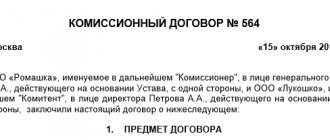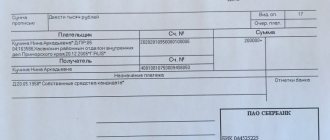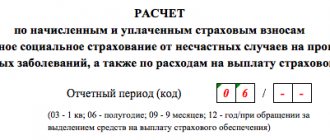In what cases is an employee’s absence considered absenteeism?
Absenteeism is an established and confirmed fact that a person is absent from his workplace for a certain period of time without providing management with a worthy explanation for his action. It may cause management to express a desire to terminate relations with such an unscrupulous employee. This is stated in paragraphs. And clause 6 of Art. 81 Labor Code of the Russian Federation.
Legislative definition of truancy
You can be fired due to absence from work if:
- the person does not report to work for more than 4 hours of working time in a row;
- absence from work.
In addition, the RF Armed Forces expanded the list of grounds for terminating an employment contract with an employee on such grounds. In particular:
- leaving a job early if an employment contract has been concluded with the person;
- leaving your workplace earlier than the date specified in the notice of early termination of the employment agreement;
- unauthorized leave.
Note! Before dismissing on such grounds, the employer must obtain written explanations from his employee and follow certain instructions. In particular, an act of absenteeism of the employee must be drawn up.
Registration procedure without debarment
Expert opinion
Kozlov Nikita Vladimirovich
Practitioner lawyer with 7 years of experience. Specialization: family law. Legal expert.
If the employer decides to formalize the punishment, he will have to issue an order for absenteeism without dismissal. In this case, it is necessary to take into account the time frame, namely:
- Upon the fact of a violation, an explanatory note is taken from the truant;
- If the culprit refuses to explain his actions in writing within two days, an act must be drawn up;
- Only one penalty can be imposed for a misdemeanor.
The punishment is applied no later than 1 month from the moment it became known . The maximum period during which a penalty can be imposed is 6 months from the date of violation. If the absence lasted more than 1 day, the countdown starts from the last day.
Sample order
In addition to the heading, signature and date, the document must indicate the circumstances of the violation, what it was expressed in and what documentary evidence is confirmed. To make it easier to navigate how an order for absenteeism without dismissal is issued.
Filling Features
You must enter information accurately, namely:
- “V.V. Aleksandrov, 1st category storekeeper of Housing Department No. 3 of the Repair and Operations Department branch, was absent from his workplace on May 03, 2020 from 08:00 to 17:00. He did not provide documents confirming a valid reason for absence.
- Alexandrov V.V. grossly violated labor discipline, failed to fulfill the duties provided for in Article 21 of the Labor Code of the Russian Federation, as well as the internal labor regulations of the enterprise.”
Next you need to indicate other reasons:
- Internal notes from employees and the immediate superior of the offending person.
- Acts of absence from work.
- Written explanation from the employee.
- Working time schedule.
- Other documents, for example, orders on previously imposed penalties.
Next, in the middle, the word “Order” is written, after which the sanction for the truant and instructions to officials are indicated. For example, a personnel employee must prepare an order, send copies of it to interested parties, and the violator’s immediate supervisor must make changes to the work time sheet and familiarize the employee with the order.
In what cases is the absence of an employee not considered absenteeism?
Not every absence from work can be considered absenteeism. The Labor Code of the Russian Federation specifies cases when a person cannot be fired for not going to work. This:
- employee illness. The period of absence must be confirmed by a relevant document from the medical institution;
- vacation due to the fact that the employee needs to pass an intermediate or final exam or defend a diploma. The basis is confirmed by paper from the educational institution;
- the need for a person to visit law enforcement or investigative agencies, court. The justification is the subpoena;
- some force majeure circumstances. For example, a natural weather event.
Note! If management does not pay its employees wages for 15 days in a row, this is grounds for absenteeism. Such an action will not be considered truancy. But management must be notified accordingly.
What is truancy
Absenteeism from work is the absence of a subordinate from work for more than 4 hours.
If an employee has violated the terms of the employment contract, you should not make a hasty decision and fire him. The main thing is to find out the reason.
Please note that there are exceptions. If a subordinate called his boss the day before and voiced over the phone why he couldn’t go to work, this is not considered absenteeism without a good reason.
But, not everything is so simple. If a controversial situation arises, it is necessary to confirm that the boss was notified. In this case, only witnesses or a recording of a telephone conversation will help.
It is also worth considering that employees have different responsibilities, and if the absence of one may not even be replaced by many, then the absence of another may affect the profit of the entire enterprise.
Example: if you are an ordinary secretary, but nothing bad will happen in the company during your absence. But if you are the chief engineer who is responsible for starting up the equipment and starting production for the whole day, then the losses can be colossal.
Consequences of absenteeism for an employee
A person’s absence from work is a violation of discipline at the enterprise. For such actions he may be punished. The employer has the right to apply disciplinary measures against him:
- make a remark, both oral and written;
- make a reprimand with or without entering it into your personal file;
- dismiss under the relevant article.
It is important to understand that a “bad” entry in the work book can negatively affect a person’s future work activity. Therefore, employers often meet negligent employees halfway and offer them to resign of their own free will. Termination of an employment relationship on this basis is beneficial to both parties. The employee will not have an “ugly” entry in the work book, and management will not need to draw up a lot of paperwork, including the employee’s absence certificate.
Consequences of employee absenteeism
The absence of an employee leads to various negative consequences - from lost benefits in the form of unproduced goods or specified services, to the loss of a customer, penalties, losses and bankruptcy of the enterprise. The staff thinks little about this; their frivolous actions can cause the liquidation of the company.
However, not any employee absence is considered absenteeism . This includes his absence from work:
- During the entire working day, even if the shift is less than 8 hours;
- For four hours, but continuously;
- Without an official notification of intention to terminate the employment contract;
- After submitting a letter of resignation, but without working the two weeks required by law;
- Due to time off or vacation, but without receiving official permission from the employer.
All these legal grounds fit into the order for absenteeism without dismissal. The type of punishment chosen by the employer is also indicated here.
Choice of sanction
Labor legislation stipulates that for absenteeism, the person responsible may be reprimanded or reprimanded and entered into his personal file. The last resort is dismissal.
For officials - civil servants and military - other types of punishment are provided - from warnings and severe reprimands, to deprivation of bonuses and insignia, as well as termination of contracts.
But even if the employee is guilty of absenteeism, he does not have mitigating circumstances, when choosing a sanction that fits into the order for absenteeism without dismissal, it is necessary to take into account:
- Degree of guilt;
- Reputation as a truant;
- Absent from work for the first time or such violations are systematic;
- The attitude of the perpetrator towards the offense.
Conscientious employees will find a reasonable explanation for the incident. In this case, you can do without dismissal, limit yourself to a verbal remark, or conduct a preventive conversation.
With the rest of the subordinates, you need to make a decision based on economic feasibility . It is possible that hiring and training a new employee will cost time and money, leading to financial losses. It is better to find a compromise option, limit yourself to a reprimand and enter it in your personal file, but think about a replacement in the future.
Why do you need a certificate of absence of an employee from the workplace?
It is compiled in order to record the fact that the person is not at his workplace, and he has not provided any explanation. That is, this document does not carry a disciplinary or punitive load.
Perhaps, when the person is able, he will provide a written explanation for his absence. For example, on the way to work, the driver had an accident, was hospitalized, and was unable to report his condition. The management records the fact that he did not show up for work at the beginning of the working day and for the next 4 hours. Then management learns about the health situation, the employee will have sick leave, and the reason for absence is valid. But, if not for the accident, the act would have become the basis for dismissal.
The act of absence of an employee from the workplace is only documentary evidence that the person is not at work - it is quite possible that the reasons for absence will be valid
What is and is not considered truancy?
Absenteeism means the absence of an employee from the workplace after four hours from the start of working hours in accordance with the organization’s labor regulations without good reason. A single absence is grounds for dismissal, since such employee behavior is a serious violation of working conditions.
In particular, visiting a clinic for a simple consultation will not be considered a valid reason, however, opening a sick leave for sick leave is a valid reason for absenteeism, and in this case, no disciplinary action will be taken against the employee. The legislation defines circumstances that will not be considered absenteeism when not showing up for work, but there is no clear list of such situations.
The following circumstances can be identified that are valid reasons for failure to show up for work at the time established by the work schedule:
- the occurrence of circumstances of temporary disability of the employee, on the basis of which the medical organization issued sick leave;
- involvement of an employee in any duties by state or executive authorities, for example, giving evidence to the police or testifying in court during working hours;
- donating blood as a donor, since according to Art. 186 of the Labor Code of the Russian Federation, an employee who participated in the program has the right to one day off;
- arrest on the basis of a court decision or court order to detain an employee;
- the occurrence of an emergency situation in which it becomes impossible to get to work, most often these are natural disasters or emergency work in the employee’s home, during which he cannot leave his living space;
- participation of an employee in a strike of the organization’s employees due to disagreement with the policies of the organization’s management;
- suspension of work activities due to lack of payment of wages, the delay of which exceeds 15 calendar days, etc.
The employer may independently establish other circumstances that may constitute valid reasons for absence from work. For example, some organizations allow employees not to appear at work due to the theft of their car or accompanying a close relative to medical facilities with the provision of supporting documents.
If an employee is absent from the workplace for a good reason, sanctions for absenteeism cannot be applied to him, even if an absence report is drawn up. In this case, the employer issues an order to revoke the order of disciplinary action in accordance with the justification for absenteeism.
Who should draw up a truancy report?
The person whose duties include drawing up the act is not established by law. This can do:
- HR employee;
- legal department employee;
- the immediate supervisor of the potential truant;
- head Secretary.
A person can be fired based on the act, so it must be drawn up in such a way that there are no complaints about the document. Otherwise, the employee will be able to challenge it in court. Therefore, other employees of the enterprise must be present when drawing up the document. Minimum 2 people, but more is better. They will act as members of the commission, who will then confirm with their signatures the legality of drawing up the act.
The potential “truant” must be familiarized with the document. He must sign and the visa is “acquainted”. A signature on a document does not mean that a person agrees with it. The company's management should also be familiar with the document.
Features of the document
The act is drawn up in any form, but with the obligatory indication of some information:
- information about the enterprise where the potential “truant” works;
- the composition of the commission that recorded the fact of a person’s absence from the workplace. You need to list the number of people, their positions and full names;
- a detailed description of the fact of failure of a specific employee (his full name and position) to work (a specific calendar date).
Note! If written explanations of his actions have already been taken from the employee, then they can be given below after the signatures of the commission members. You can ask for a separate written explanation.
Form of the act
The document can be drawn up:
- on a regular A4 sheet;
- on the institution's letterhead.
Mandatory registration requirements are:
- written form;
- Availability of details (date of formation, serial number);
- information about the employer;
- information about the absent employee indicating his full name. and positions;
- reason for absence;
- data of employees (full name, position) who executed and signed the document, certifying the actual absence of the person at work.
The procedure for registration and content of the act of absenteeism
Absence from work form
How to draw up a certificate of absence from work? The following rules must be followed:
- in the “header” you need to write the name of the document. For example, “truancy act” or “absence act”;
- below is the name of the locality in which the event occurred and the calendar date;
- further the composition of the commission - positions and full names;
- then information about the employee - the name of the structural unit, his position and full name;
- the circumstance for which the act is drawn up - the date when absenteeism occurred;
- if the employee explained the reasons for his action, then they are indicated. If not, then you don’t have to write anything;
- signatures of commission members;
- signature of the employee with the visa “acquainted”.
Note! The document must be drawn up within one month from the date of violation. Otherwise, it will not have legal force, and all consequences will be considered unlawful.
Sample act
The employee is obliged to observe labor discipline, which is established in the organization, in accordance with the employment contract concluded between him and the employer.
The employee’s absenteeism act does not have any specific form and can be developed by the organization’s management based on personal beliefs and reasons, but it must contain all the provisions adopted by law. The absence of an employee from the workplace during the commission’s activities does not mean that disciplinary action will not be taken against him, however, the deadline for filing an explanatory statement begins to run from the moment the employee appears at the workplace or contacts management.
Challenging an employee's absenteeism report
An employee has the right to challenge the actions of his management. If he does not agree with the application of disciplinary punishment, including dismissal, he can appeal it in court. To do this, you need to take several actions:
- Take a copy of the act and dismissal order from management. These documents must be issued without fail, but sometimes management ignores their duty;
- draw up a statement of claim. It is recommended to contact a lawyer, since a correctly drafted application is half the success;
- wait for a summons from the court to set a hearing date;
- appear in court on the specified calendar date, bring evidence that the absence from work was for a valid reason.
Note! You can first file a complaint with the labor inspectorate; they have the authority to cancel the dismissal order. But you need to remember that there is a statute of limitations for such disputes. If you do not go to court within a calendar year after dismissal, the dispute will not be considered.
If the court rules in favor of the dismissed employee, management must reinstate him to his previous position within the working day. Also, the employer will have to pay for forced absenteeism, based on the average earnings of this person. The plaintiff also has the right to demand compensation for moral damage.
How to properly document the fact of absenteeism?
After it becomes known about the absence of an employee, it is necessary first of all to document the absence. The presence of official paper is necessary for the lawful imposition of a disciplinary sanction. That is, before issuing an order for dismissal for absenteeism, you will need to draw up an act or memorandum, which will be the basis for imposing such a penalty.
Drawing up an employee absenteeism report
As a rule, such documents are drawn up according to the requirements of a particular enterprise. The format of the act and its content varies greatly among different organizations. However, even in the absence of a generally accepted template, the act always indicates information such as:
- Details of the manager who compiled the document;
- Last name, first name, patronymic and position of the employee who committed the violation;
- Date of absence from shift;
- The time the offender was absent from the designated workplace. If he did appear, then the time of arrival and departure is indicated. If you are not on shift at all, then the total time of absence is indicated;
- Date and time of drawing up the act. It can be drawn up either on the day of the violation or the next day;
- Signatures of three employees who certified the act. The details of each of the signing employees, as well as the details of the violator, are indicated along with their positions.
In addition to the points described above, the act may contain a separate column to indicate the reason for absence. As a standard, it indicates “failure to appear for an unknown reason,” abbreviated as “NN.”
Verification of information on the fact of violation
Before drawing up an order for truancy, it is necessary to obtain a response from the offender or take action to receive it. If an employee gets in touch and independently expresses a desire to justify his absence, he will need to write an explanatory note indicating the reasons. Supporting documents may also be attached to it. The period for providing an explanatory note is on average about two days.
If during this time the employee who violated the order did not provide his manager or organization with an explanation on his own, it is necessary to ask him for the reason. That is, even if the employee does not get in touch or does not want to answer, the organization must send a telegram with a request to his place of registration. It must contain a request to justify the absence (failure to appear) of the employee at the workplace at the appointed time.
Order on disciplinary action for absenteeism
After finding out the information and filling it out in the required form, an order for disciplinary action for absenteeism is drawn up. It must be issued no later than a month from the date of the violation itself. In most cases, as a punishment for this gross violation, a disciplinary sanction is imposed in the form of dismissal of the employee, however, an order for absenteeism can be given without dismissal.
This is important to know: Dismissal due to reduction without working off
In this case, the following may be applied as punishment for violation of labor discipline:
- Comment;
- Rebuke;
- Deprivation of the right to an additional bonus (remuneration for length of service, bonus, other payment not guaranteed by law) or reduction in the amount of a one-time remuneration to the norms established by law.
Expert opinion
Lebedev Sergey Fedorovich
Practitioner lawyer with 7 years of experience. Specialization: civil law. Extensive experience in defense in court.
In addition, after the order is issued, incentive measures cannot be applied to this employee. A similar rule, including deprivation of both part and the full amount of the bonus, is valid during the established period of punishment.
Graduated from the Russian State University of Justice (RSUP). Postgraduate student at the Moscow Institute of Public Administration and Law (MGIUP). Since the beginning of 2007, judicial practice, specialization Labor law and labor disputes.









